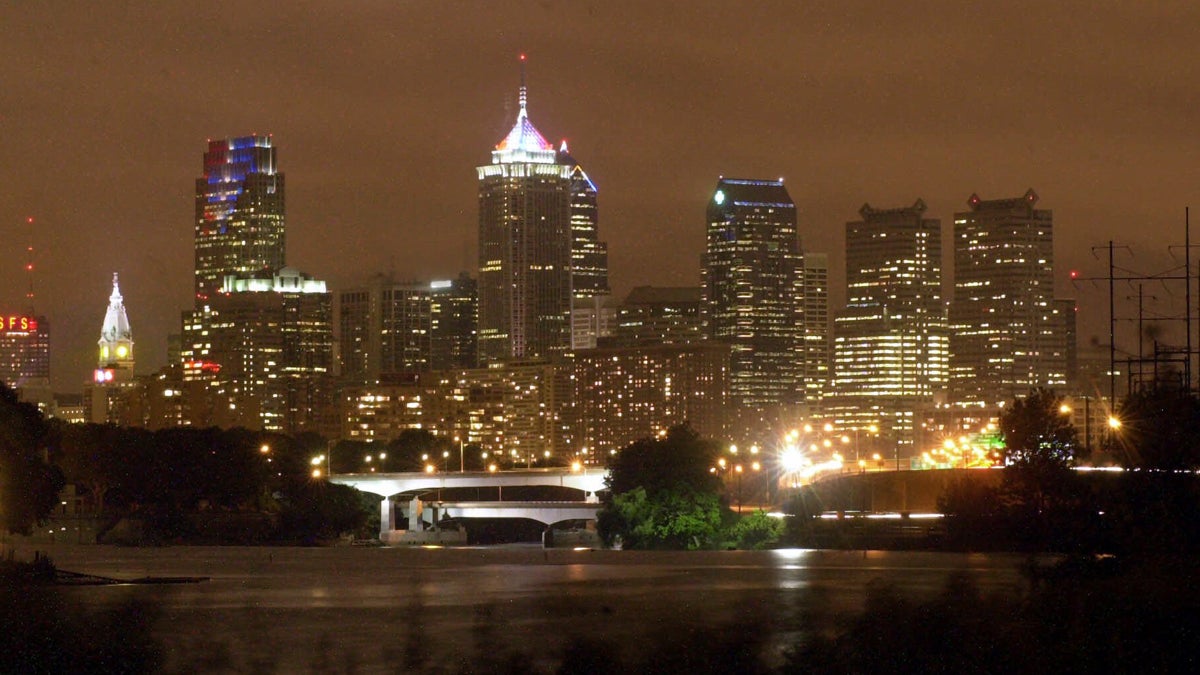Philly blackouts may spike with more powerful storms

(NewsWorks File Photo)
Philadelphia is one of the cities on the East Coast most at risk for an increase in power outages if hurricanes grow in intensity due to climate change.
A new report from Johns Hopkins University used computer modeling to analyze how higher winds would affect blackouts in 27 cities along the U.S. Gulf and Atlantic Coasts.
If winds increase significantly, the report projects Philadelphia will see the second-largest spike in power outages.
“That’s mainly because their current risk is fairly low, so they could see huge increases in the number of customers losing power,” said Andrea Staid, the report’s lead author and PhD candidate at Johns Hopkins.
“Also, as storms get more intense on average they’ll also get bigger, so the range of impact increases, which puts Philadelphia in the range of more hurricanes if they’re stronger,” Staid said.
Historically, about 60 percent of people in the Philadelphia metropolitan area have lost power during a 100-year storm, a storm so intense it is likely to come about only once in a century.
Staid’s report predicts that would jump to 92 percent if maximum wind speeds increase by 40 percent.
“If storms on average get stronger, you will see increases for these average storms since they will be stronger too,” Staid said.
Most current climate change research supports the idea that tropical cyclones and hurricanes will grow more intense as the globe warms, leading to higher winds that may down trees and power lines.
Coastal cities like New Orleans and Miami will continue to bear the brunt of hurricane winds and damages, but the report’s authors write that the increase in damage is likely to be worst in New York, Philadelphia and Jacksonville, FL.
“If I’m mayor of Miami, we know about hurricanes, we know about outages and our system has been adapted for it,” said Seth Guikema, a Johns Hopkins geography and environmental engineering professor whose team conducted the research. “But if I’m mayor of Philadelphia, I might say, ‘Whoa, we need to be doing more about this.'”
Guikema said in a press release that officials could use the report to better plan for power grid vulnerabilities brought about by climate change.
However, even with a growing number of reports on the impacts of climate change being published, grid operators say the data are too broad to help them make specific upgrades or operating changes, according to Mike Bryson at PJM Interconnection, the regional transmission authority.
“There’s a lot of data… but it doesn’t help determine where you’re going to fix (vulnerabilities),” said Bryson, executive director of system operations at PJM.
“I think as better models get developed, those things may be able to be used in planning and operations scenarios,” Bryson said.
Bryson said after Hurricane Sandy, electricity providers did start new substation waterproofing projects to reduce customer outages, including raising equipment in substations to prevent flood damage and putting some equipment underground.
WHYY is your source for fact-based, in-depth journalism and information. As a nonprofit organization, we rely on financial support from readers like you. Please give today.

